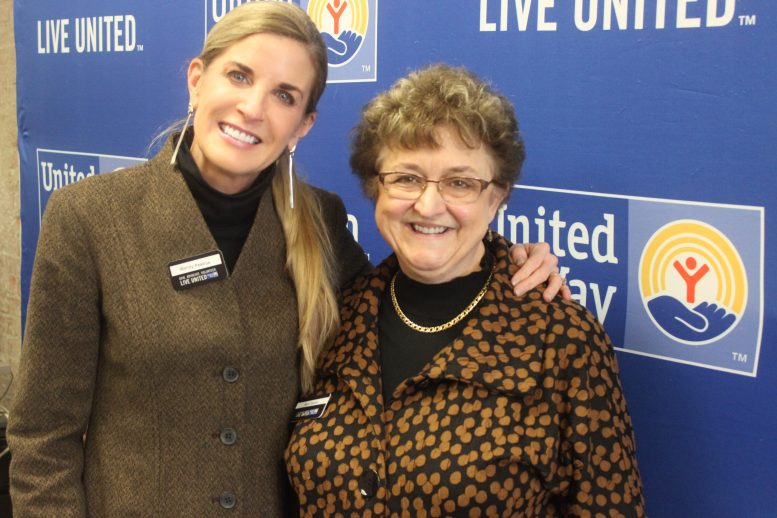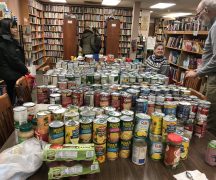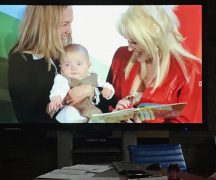By DAVID DUPONT
BG Independent News
Wendy Pestrue is a not complete newcomer to the United Way. Less than a month on the job as the president and CEO of the United Way of Greater Toledo, she explains she has not made her career with the charity. But, she said, when she was a teenager in her hometown of Lubbock, Texas, she was the United Way Flame.
“I went to the luncheons for the fundraising campaign, and when they allocated funds, I got to visit the agencies and help celebrate their good work,” she said. “It was an interesting exposure to United Way at a young age.”
She went on to work her way through college as a vocational nurse, then worked in education and earned a law degree. Her career has been with education and health care non-profits. That included working at Defiance College and living in Perrysburg.
She and her husband, Justin Pestrue, moved to the area when he took a job in analytics with Michigan Medicine. She was happy to return to the region, and plans to move soon into the Toledo area.
Pestrue, 51, stopped by the United Way office in Bowling Green last week to introduce herself.
She takes over an agency at a time of change. The old way of doing things doesn’t necessarily work anymore, and the trail forward has yet to be blazed.
The United Way model has lived for 100 years, she said, “but what does it look like in the next 100 years?” Donations are down, not only in the Greater Toledo area, but nationwide. “Trend been going down the last few years,” she said.
That’s a result of many changes in society.
Sue Clanton, area director for Wood County, said “stagflation” has played its part.
Also, changes in the work place has made the company-based approach, where the United Way makes a pitch to assemblies of employees, no longer sufficient, Pestrue said. Companies downsize, and many more workers, especially younger workers, aren’t employed in offices.
The way people give to charity has changed, especially among millennials. Crowd sourcing for particular causes continues to grow.
That’s how millennials give, Pestrue said. They tend to be intensely involved, and then move on. And they like events, both attending and working at them.
Clanton said the recent Chocolate Crawl is an example of such an event. It drew college kids, young adults, and those younger and older to visit shops throughout downtown Bowling Green sampling a variety of confections.
“Chocolate works for everybody,” Pestrue said.
Clanton made sure agencies were on hand “so people understand when they invest in United Way they are investing in multiple agencies.”
Addressing that changing philanthropic landscape, Pestrue said, means “listening to people and making changes to align with the community needs.”
The goal is to determine how the charity can be relevant both to those who receive funding and from those who donate.
Because the needs still exist, though they are changing as well, especially as baby boomers age.
Food insecurity, gaps in health care, and financial opportunity centers are among the efforts on Pestrue’s radar. The financial centers can help people in times of crisis, when they are facing eviction or utility cut offs.
That’s a constant need, Clanton said.
But they offer more than a handout, Pestrue said. They are “teaching people how to thread through the economic realities and making good choices and how different components of their lives can improve with some thoughtful effort on that front.”
Clanton said donations to agencies are no longer constant. The volunteer board she works with is always scanning the environment looking at where the needs are. “They examine it, turn it upside down, inside out, and say ‘this is where we want to go.’”
Several years ago that resulted in the creation of the NET Plus transportation service. The agency helped get it started, but no longer provides funding.
Pestrue also believes that United Way needs to use more advanced analytic data to determine where its money is making the most impact.
She will work to growing the percent of donations coming from foundations as well as reaching out to more individual donors.
Getting to individuals is tougher, she said. United Way needs to get people “engaged at a higher level and feel good about their investment.”
That means “demonstrating that through United Way collaborating with several agencies has gotten you a result that you would not have gotten donating to just one,” she said. “We hope people in the area will look at United Way again if they’ve stepped back for a while and think about what United Way is doing for the community, and consider giving.”





